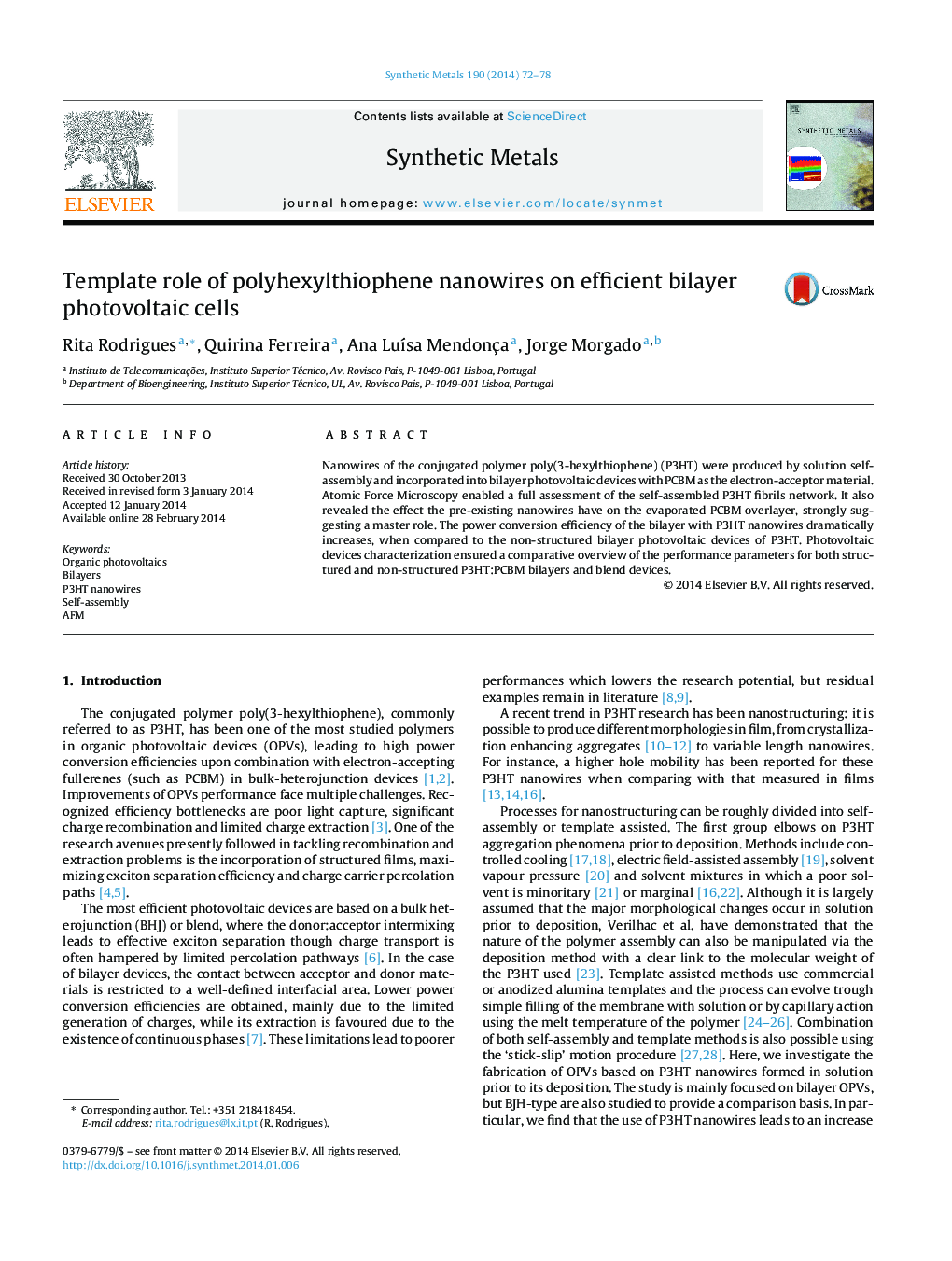| Article ID | Journal | Published Year | Pages | File Type |
|---|---|---|---|---|
| 1441024 | Synthetic Metals | 2014 | 7 Pages |
•P3HT nanowires were produced by self-assembly in solution.•Incorporation into bilayer photovoltaics led to an increase in efficiency.•Assembly of PCBM on top of P3HT nanowires was evidenced by AFM.
Nanowires of the conjugated polymer poly(3-hexylthiophene) (P3HT) were produced by solution self-assembly and incorporated into bilayer photovoltaic devices with PCBM as the electron-acceptor material. Atomic Force Microscopy enabled a full assessment of the self-assembled P3HT fibrils network. It also revealed the effect the pre-existing nanowires have on the evaporated PCBM overlayer, strongly suggesting a master role. The power conversion efficiency of the bilayer with P3HT nanowires dramatically increases, when compared to the non-structured bilayer photovoltaic devices of P3HT. Photovoltaic devices characterization ensured a comparative overview of the performance parameters for both structured and non-structured P3HT:PCBM bilayers and blend devices.
Graphical abstractP3HT nanowires incorporated into bilayer photovoltaics lead to increased efficiencies and PCBM acceptor structuration. Figure optionsDownload full-size imageDownload as PowerPoint slide
